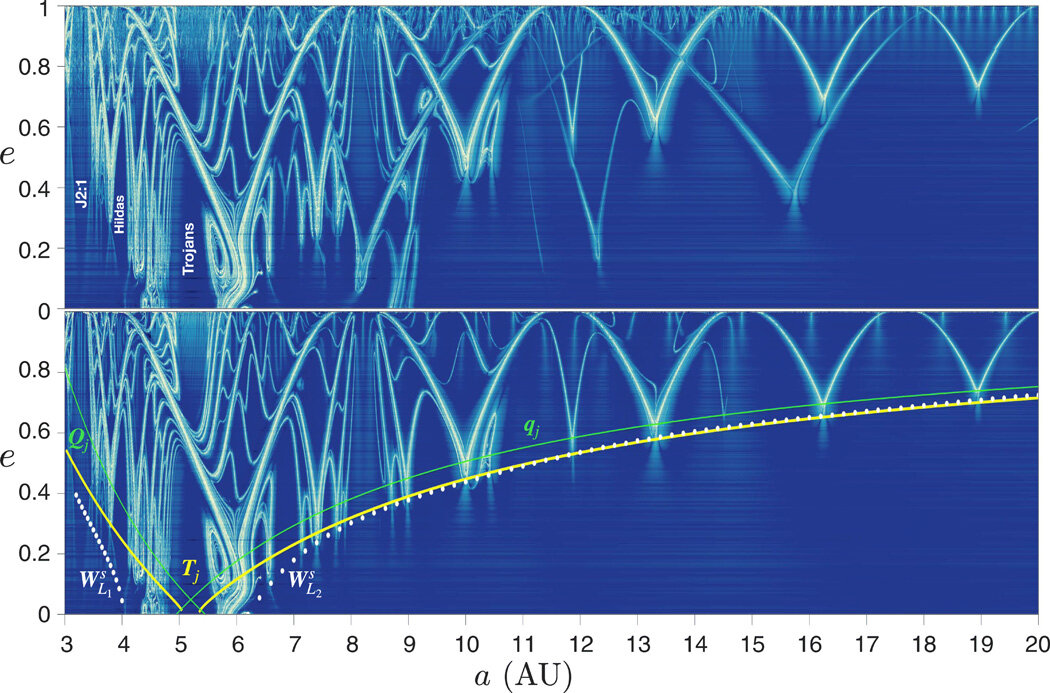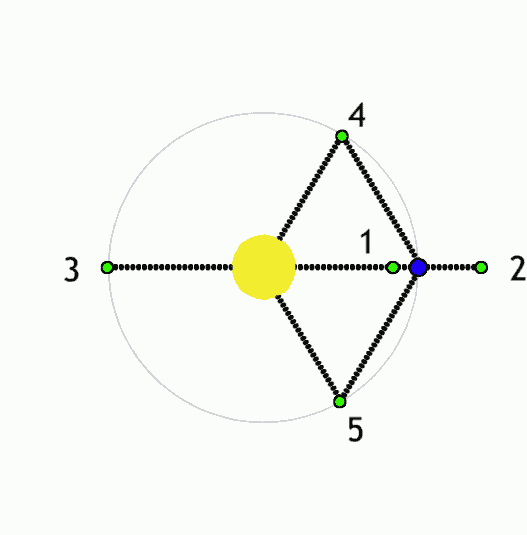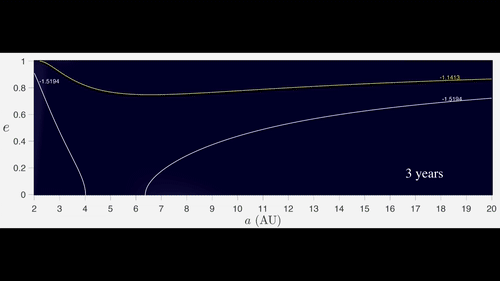Invisible 'arches of chaos' span the solar system

A vast network of invisible energy structures have been discovered in the solar system — a celestial superhighway that future space probes might use to explore far-away corners of solar space.
These hidden energy structures, called manifolds, emerge in space-time due to the gravitational interaction of massive objects like the planets, said Nataša Todorović, a mathematician at the Serbian Belgrade Astronomical Observatory and lead author of a paper on the discovery. While astronomers have long known about such pathways, and even used them to navigate our celestial neighborhood, the new study has revealed a new shape in these manifolds: "arches of chaos" that form an unseen "ornamental structure" that evolves over decades. And this discovery could help explain the mysterious behavior of comets and other small objects that dance erratically in and out of this part of the universe.
Related: From Big Bang to present: snapshots of our universe through time
Manifolds are essentially cosmic express lanes that emerge from the complicated gravitational attraction between celestial objects. "Gravitational [manifolds] are simply a catalog of some unusual looking 'free fall' paths through the solar system," meaning paths where an object seems to fall, like Newton’s apple, on a path dictated by the gravity of a large object, said Shane Ross, a Virginia Tech University aerospace engineer who pioneered the study of these structures.
"Here on Earth, close to the ground, free fall paths look rather boring — a collection of straight lines pointing to the ground (for objects starting from rest, like a falling rock) and parabolic lines if the object was given an initial horizontal velocity, like a baseball," Ross, who was not involved in the current study, told Live Science. "But imagine a rock starting out farther from the Earth, in fact close to the moon."
At that point, the layout of gravitational corridors gets more complex. A small nudge could make a big difference — a sensitivity mathematicians refer to as chaos. As the gravity of Earth and the gravity of the moon get closer and closer to balancing each other out, chaos increases, and the manifolds grow more complex.
"I understand a single manifold as the boundary between chaos and order," said study co-author Di Wu, an engineering researcher at the University of California, San Diego (UCSD).
Get the world’s most fascinating discoveries delivered straight to your inbox.
Todorović, Wu and Aaron Rosengren, also an engineering researcher at UCSD, studied manifolds emanating from each planet's "Lagrange points" with the sun, which are the points where the gravities of the two massive objects can combine to hold smaller objects in a fixed position in space relative to the planet.

A third object orbiting the sun at a Lagrange point would seem to hang in space from the planet's perpective because of that gravitational effect.
The researchers studied these manifolds by simulating the solar system on a computer and sending "test particles" through it, like thousands of tiny, imaginary spacecraft. Over time, the paths followed by those spacecraft revealed the true shape of the manifolds emanating from the Lagrange points of planets such as the gas giants.
Jupiter's manifolds, they found, create an arch shape, with more chaotic manifolds surrounding the most orderly central manifold. Every new Jovian year, Jupiter produces a new arch, and they pile up over time. The manifolds following Saturn, Uranus and Neptune produce arches as well.

These arching manifolds likely explain the behavior of asteroids and comets that tend to hang around Jupiter before unexpectedly skipping off into deep space or plunging into the inner solar system.
Over the course of a century in the researchers' simulation, thousands of test particles passing through Jupiter's Langrange points changed course and blasted outward toward Neptune. Some completed that epic journey in under a decade.
Related: 9 strange, scientific excuses for why humans haven't found aliens yet
These manifold changes could also explain why small objects tugged on by a giant planet often behave in predictable ways — until they don't. Comets around Jupiter have been observed suddenly changing their orbits after long periods of stability.
Researchers have long thought of manifolds as forming an "interplanetary superhighway," Rosengren said. So it's not surprising that Jupiter's gravity can help objects reach deep space.
"The unique aspect of our research, however, and what has hitherto not been observed, is the [full] structure of this superhighway," Rosengren told Live Science. "What is also revealed is the surprising depth to which the manifolds emanating from the neighborhood of Jupiter can permeate the solar system."
Hopefully, this new understanding will eventually lead to more advanced navigation for space missions, Rosengren said. A probe riding expertly along the arches of chaos might reach its destination much faster and use less fuel than current probes, which rely on blunter navigation techniques that only account for one major source of gravity (like Jupiter, or the sun) at a time.
"More research is needed to understand the arch shape," Rosengren said.
The arches seem to link together in a gorgeous, hidden logic.
"As to why they connect in such a beautiful pattern, frankly speaking, we haven't the slightest idea yet."
Originally published on Live Science.



